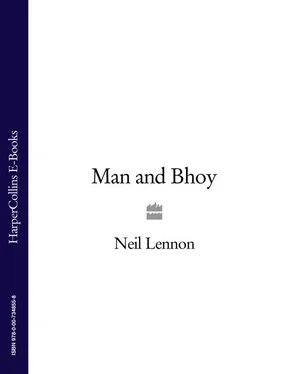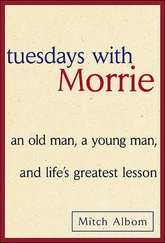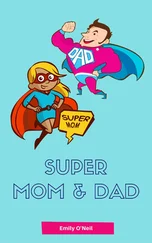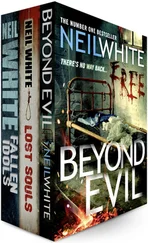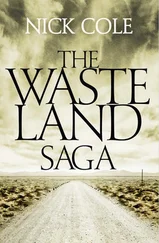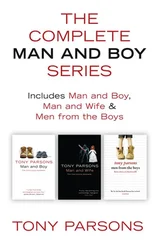1 ...6 7 8 10 11 12 ...19 As well as playing the game, we Lurgan boys were also passionate about the teams we supported. Most people I know become football supporters at a young age when they choose their team to follow by some strange process that sometimes defies scientific analysis.
Throughout Ireland, British football is the game of choice for fans. The fortunes of Manchester United, Arsenal, Liverpool and the other big English clubs are followed closely by tens of thousands of people, many of whom rarely see their heroes in the flesh. In Northern Ireland, for not always the best of reasons, the two clubs with the biggest support are Celtic and Rangers. Dozens of buses leave Belfast, Derry and elsewhere for Scotland every weekend of the season, with people travelling on segregated buses and ferries. The colours of the two teams are seen everywhere, though they are never side by side. That’s just a fact of life in Northern Ireland.
The dedication of those fans to the Old Firm clubs is unbelievable. It is almost like a pilgrimage for them. Those who come over from Donegal, for instance, have to get up at four in the morning and then after the match they have to leave straight away in order to be on time for the boat home.
For as long as I can remember, my team was Celtic. My dad supported them, most of the rest of the family were fans, and they were very important to us and to many people in our community, as shown by the fact that one of the biggest clubs in the town was called Lurgan Celtic. It just seemed natural to follow Celtic, even if they played many miles away in Scotland, and as a fan, I dreamed of one day playing for them.
Live football was a rare thing on television when I was a boy. We did not have satellite television in those days, and you only got to see European games now and again, but we would avidly watch any scraps of highlights shown.
I actually saw Celtic in the flesh, so to speak, on two occasions as a young boy. They played a friendly match in Dundalk which is not far south of Lurgan, and my dad took me to see them. The second time was as a special treat as I went with Lurgan Celtic Boys Club to see them play Aberdeen in the Scottish Cup semi-final of 1983 when I was not quite twelve years old. It was a tremendous experience, and I was amazed at the sheer number of people all around me. The noise and the colours made it a real adventure, but the ending wasn’t so great—the Hoops were beaten 1-0 by Alex Ferguson’s fine side who were then at their peak and went on to win the cup.
I could have gone to more games as there were buses and cars which left from Lurgan and my dad occasionally went to Glasgow where he had friends and relatives. But by the age of ten I was playing every Saturday and I much preferred to play rather than watch. However, I used to love listening to the stories of those who did go over to Parkhead, and I suppose I got a bit jealous of those who had seen my heroes.
My favourite player as a youngster was Kenny Dalglish. He had it all—great skill with either foot, amazing strength in the penalty box, and the vision to make telling passes or take up perfect positions. He had been largely unheralded outside Scotland before his record-breaking move to Liverpool, but it was no surprise to those of us who idolized him that he quickly made his mark in England and Europe, and went on to become a legend at Anfield. In modern times, Kenny is the king of Celtic players as far as I am concerned, and only Henrik Larsson ranks alongside him.
From the outset with Lurgan Celtic’s boys’ side and with St Peter’s primary’s team, I was a prolific goalscorer. I played on the right wing for the club but for the school I played at centre-forward and I really did score a barrowload. That may come as something of a shock to those Celtic fans who have seen me score precisely three times in the five-and-a-half seasons that I have been at Parkhead. But as a youngster I scored regularly, almost week in and week out, both for my schools teams and for my clubs, and while still at primary school, a headline appeared in my local newspaper ‘Lennon Hits Three’.
At the same time as I was starting out in football, I was also learning the ropes in Gaelic football. While there are similarities between the two sports, the latter involves handling and passing the ball from hand or foot. From the start I loved them both, but soccer—I’ll use that term to avoid confusion—was always my preferred version.
Junior soccer was given quite good coverage in the local press, and my family have newspaper clippings to prove that I was something of a goalscoring sensation. I particularly remember playing in five-a-side and indoor tournaments, and I think the first picture of me in a newspaper was when we won the Craigavon Festival Under-11 trophy. Also in that five was Gerry Taggart, who would become a lifelong friend and a very fine professional footballer. Gerry and I also played in the Lurgan Celtic team which was chosen to represent Armagh in the Ulster age group finals at the Community Games in Letterkenny, County Donegal. Gerry scored two as we won the final 6-1 against Monaghan, and I got a hat-trick inside fifteen minutes—a little different to my scoring ratio with Celtic of one goal every two seasons!
The national finals of the All-Ireland Community Games at Butlins’ Irish camp at Mosney was a very prestigious tournament, and Gerry Taggart and myself were both picked for the Lurgan area Under-12 side which represented Armagh in the games. Scouts from senior clubs in Britain watched the final in which we beat Galway on penalties thanks largely to goalkeeper Dee Horisk saving three of their spot kicks.
Butlins camp at Mosney would become a regular haunt for me. In September 1983, several of us who had won the soccer trophy returned to contest the Community Games Gaelic football final, which was played for the Charles Haughey Perpetual Cup. Gerry Taggart, Dee Horisk and I all played for the Craigavon select eleven which won this trophy competed for by sides from all over Ireland.
I loved our visits to Butlins, because apart from the football there were all sorts of fun and games for youngsters. There was an amusement park attached to the camp and when we weren’t playing matches, we could be found there having a whale of a time.
In my last year at St Peter’s, I was selected for the Mid-Ulster District Primary Schools Team to play in various tournaments. It was as a result of playing well for the Mid-Ulster side that I first came to the attention of the Northern Ireland schoolboy team selectors.
The official records showed that in my final year at primary school, I played all five games for Mid-Ulster against the likes of Belfast and East Antrim, scoring five of our fourteen goals as we finished second in the league. I nearly always played up front at that time, and it was the same in Gaelic football where I occupied one or other of the forward positions and liked nothing better than to score goals or points.
When I left primary school, I first attended St Paul’s junior high school, for boys aged from eleven to fourteen, and here again football was my main preoccupation. I was just eleven and in my first year when I was selected to play for the school Under-13 side. We were a very good side under the charge of teacher Mr Kevin O’Neill, and I remember we beat our great rivals Killicomaine School to win the local school league and cup double. Again, I scored a hat-trick in the cup final, and we got our team picture with both trophies in the Lurgan Mail —always a sure sign of success.
As well as playing for St Paul’s I was by then enjoying myself with Lurgan Celtic. Our Under-13 team went through the entire season unbeaten and won the Michael Casey Memorial Cup into the bargain. I also had my first taste of ‘foreign’ football when I went over to Scotland and played against Greenock Shamrocks and Greenock Boys Club. Shamrock at that time had one of the best young teams around and had strong links to Celtic. We beat them 3-2 and I remember the trip well as it was my first visit to Glasgow and I got to meet some of my relatives on my father’s side who lived in Scotland.
Читать дальше
